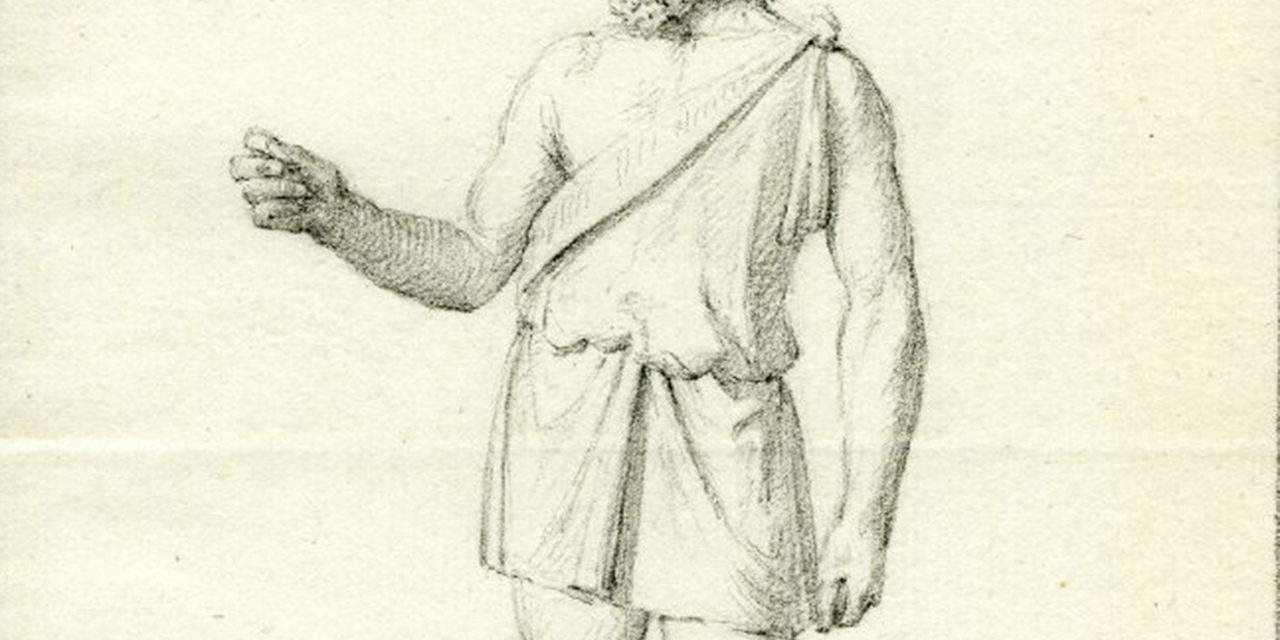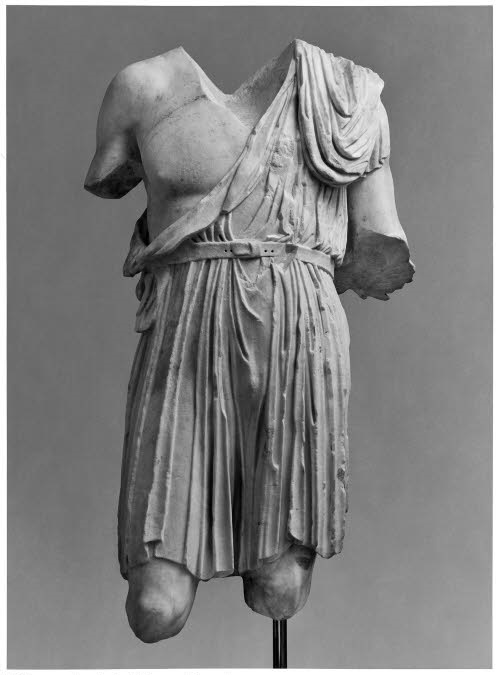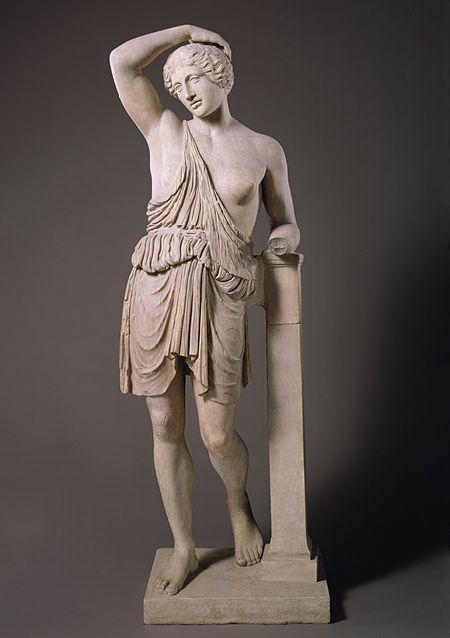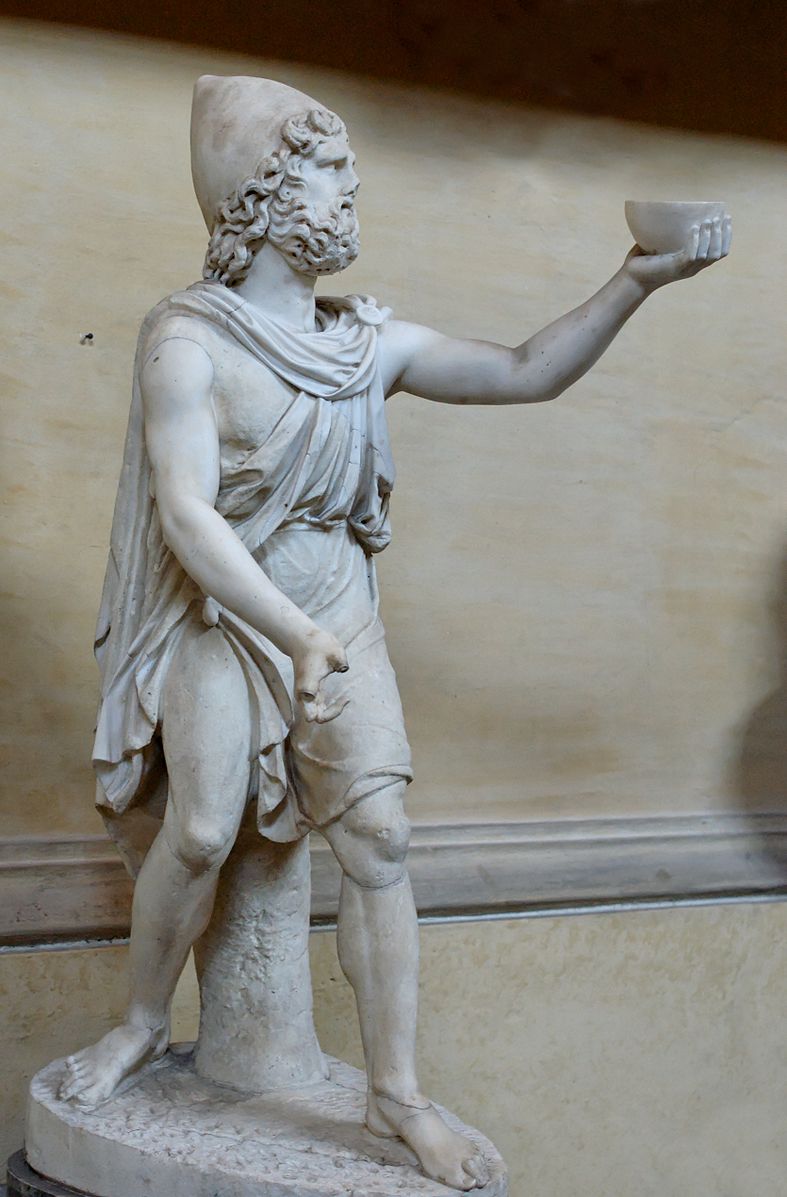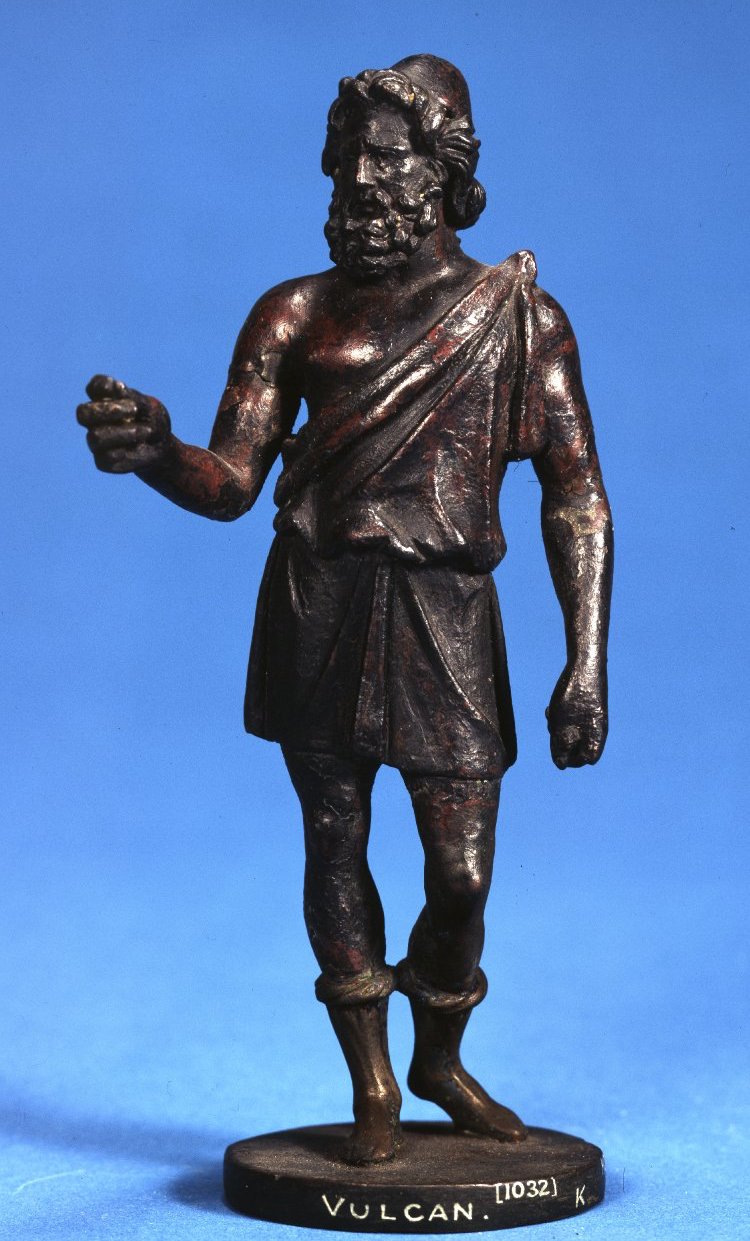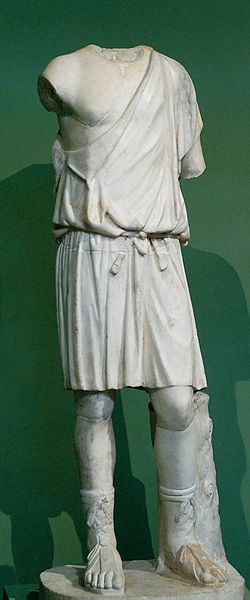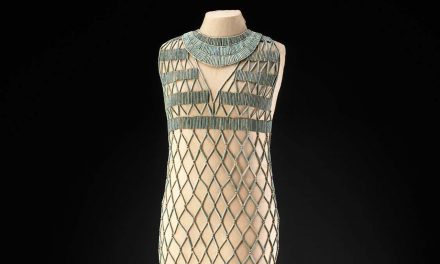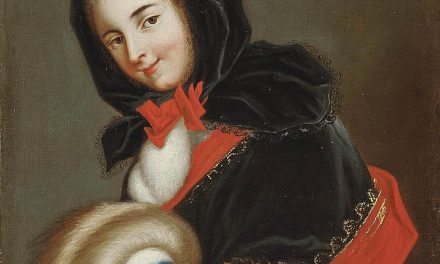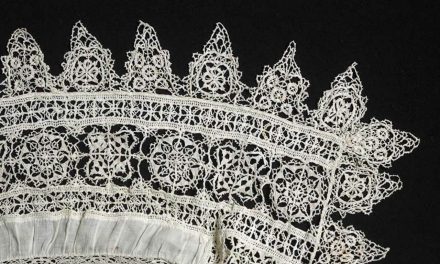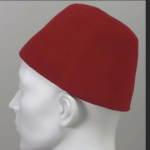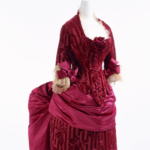A short, asymmetrical wrap garment pinned at the left shoulder, worn by men in Ancient Greece.
The Details
The Complete Costume Dictionary defines the exomis as: “a masculine garment made from a short rectangle of fabric that is wrapped around the torso, pinned at one shoulder and girded at the waist” (Lewandowski 94).
Daniel Delis Hill in The History of World Costume and Fashion (2011) writes: “the most basic costume worn by most men in the time of Homer, especially those of peasant and slave classes, was the exomis” (52).
Marion Sischel in Costume of the Classical World (1980) writes of the exomis: “artisans and fisherman folk fastened the short chiton on one shoulder only on the left” (46).
Figure 2 depicts an Amazon wearing the exomis on the right side. This atypical dress imagined by the sculptor may be related to the exomis’ association with Greek coming-of-age rituals for girls, as Mireille Lee explains in the Berg Encyclopedia of World Dress and Fashion:
“Greeks employed a variety of garments for specific purposes. The exomis, a sleeveless variety of chitoniskos, was fastened over one shoulder, leaving the other arm free for physical labor. This type is also worn by young female runners in coming-of-age rituals.”
Fig. 1 - Artist unknown (Roman). Strategist (?) in Exomis Statue, Roman copy, around 130-140 AD, after Greek model around 430-420 BC. White, medium-crystalline marble with vertical sediment layers; 120 cm. Kassel: Museumslandschaft Hessen Kassel. Acquired in 1777 by G. Hamilton by Landgrave Frederick II in Rome. Source: Museumslandschaft Hessen Kassel
Fig. 2 - Artist unknown (Roman). Marble statue of a wounded Amazon, 1st–2nd century AD. Marble; 203.84 cm (80 1/4 in). New York: The Metropolitan Museum of Art, 32.11.4. Gift of John D. Rockefeller Jr., 1932. Source: The Met
Fig. 3 - Artist unknown (Roman). Odysseus, copy of the Flavian era after an original of the late Hellenistic period. Marble. Vatican: Museo Chiaramonti, Inv. 1901. Source: Wikimedia
Fig. 5 - Artist unknown (Greek). Hephaistos wearing a conical cap and short tunic off the shoulder (exomis), the standard dress of craftsmen. Bronze. London: The British Museum, 1824,0493.2. Source: British Museum
Wikipedia writes:
“The exomis (Ancient Greek: ἐξωμίς from exo “outside”, and omos “shoulder”) was a Greek tunic used by workers and light infantry. The tunic largely replaced the older chiton as the main tunic of the 5th century BC.”
Tortora’s Survey of Historic Costume (1989) dates the exomis to 3000-100 BCE and defines it as a: “sleeveless chiton worn pinned at one shoulder by athletes and work men. Often made of sheep skin and leather” (101).
Fig. 4 - Artist unknown (Roman). Young man wearing an exomis, copy after a Greek original of the 4th century BC. Parian marble. Rome: Musei Capitolini, MC 892. From the Horti Lamiani, 1874. Source: Wikimedia
Its Afterlife
Notably the exomis principally inspires modern womenwear designs despite its menswear origins. It has inspired designers to create many different variations of the one-shoulder dress/wrap; Alexander McQueen’s Spring/Summer 1997 look (Fig. 6) is one of many.
Fig. 6 - Alexander McQueen for Givenchy (British, 1969-2010). Haute Couture, Spring/Summer 1997. Source: Pinterest
References:
- “Exomis.” Wikipedia, September 26, 2017. https://en.wikipedia.org/w/index.php?title=Exomis&oldid=802453940.
- “Garments in Classical Greece.” In Arts and Humanities Through the Eras, edited by Edward I. Bleiberg, James Allan Evans, Kristen Mossler Figg, Philip M. Soergel, and John Block Friedman, 86-92. Vol. 2, Ancient Greece and Rome 1200 B.C.E.-476 C.E. Detroit: Gale, 2005. Gale Virtual Reference Library (accessed September 27, 2017). http://libproxy.fitsuny.edu:2200/ps/i.do?p=GVRL&sw=w&u=fitsuny&v=2.1&it=r&id=GALE%7CCX3427400228&asid=453ea571dad8cd83dfdfef7ab3b594e1.
- Hill, Daniel Delis. History of World Costume and Fashion. Upper Saddle River, NJ: Pearson Prentice Hall, 2011. http://www.worldcat.org/oclc/768100950.
- Lee, Mireille M. “Ancient Greek Dress.” In Berg Encyclopedia of World Dress and Fashion: East Europe, Russia, and the Caucasus, edited by Djurdja Bartlett and Pamela Smith, 442–445. Oxford: Berg, 2010. Accessed January 17, 2018. http://dx.doi.org/10.2752/BEWDF/EDch9085.
- Lewandowski, Elizabeth J. The Complete Costume Dictionary. Lanham, MD: Scarecrow Press, 2011. http://www.worldcat.org/oclc/788995672.
- Sichel, Marion. Costume of the Classical World. London: Batsford, 1980. http://www.worldcat.org/oclc/22169539.
- Tortora, Phyllis G., and Keith Eubank. A Survey of Historic Costume. New York: Fairchild Publications, 1989. http://www.worldcat.org/oclc/990635242.

